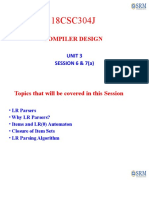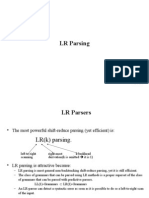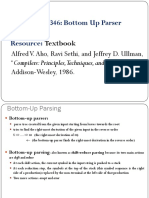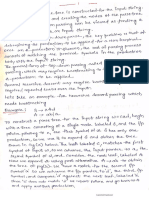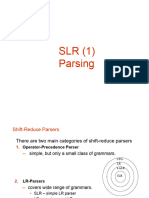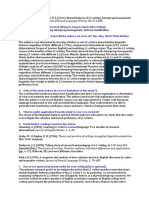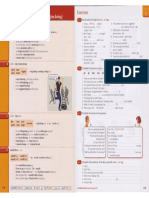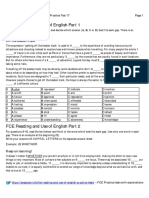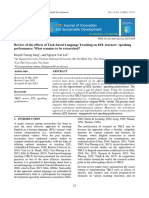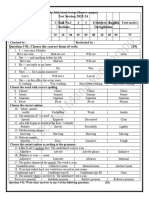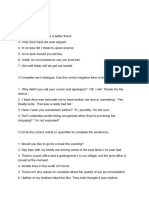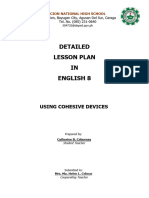0% found this document useful (0 votes)
7 views23 pagesLec3 SyntaxAnalysis Part4
The document discusses bottom-up parsing techniques, particularly focusing on shift-reduce parsing and the concept of handles in grammar. It explains the process of reducing strings to their start symbols and the operations involved in shift-reduce parsing, including handling conflicts and constructing LR(0) automata. Additionally, it outlines the structure and population of the LR parsing table, emphasizing the differences between LR and LL parsers.
Uploaded by
Abhilasha GoyalCopyright
© © All Rights Reserved
We take content rights seriously. If you suspect this is your content, claim it here.
Available Formats
Download as PDF, TXT or read online on Scribd
0% found this document useful (0 votes)
7 views23 pagesLec3 SyntaxAnalysis Part4
The document discusses bottom-up parsing techniques, particularly focusing on shift-reduce parsing and the concept of handles in grammar. It explains the process of reducing strings to their start symbols and the operations involved in shift-reduce parsing, including handling conflicts and constructing LR(0) automata. Additionally, it outlines the structure and population of the LR parsing table, emphasizing the differences between LR and LL parsers.
Uploaded by
Abhilasha GoyalCopyright
© © All Rights Reserved
We take content rights seriously. If you suspect this is your content, claim it here.
Available Formats
Download as PDF, TXT or read online on Scribd
/ 23


